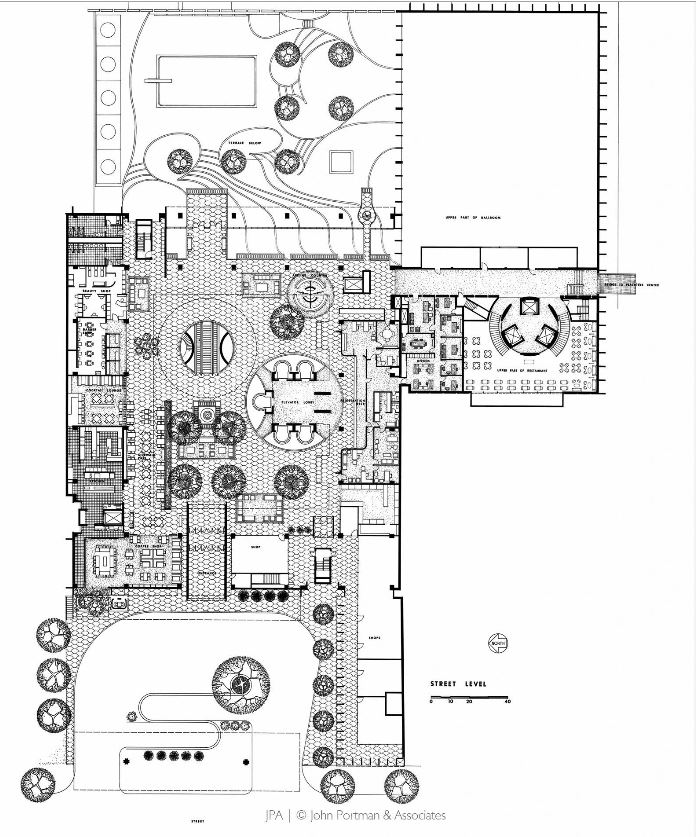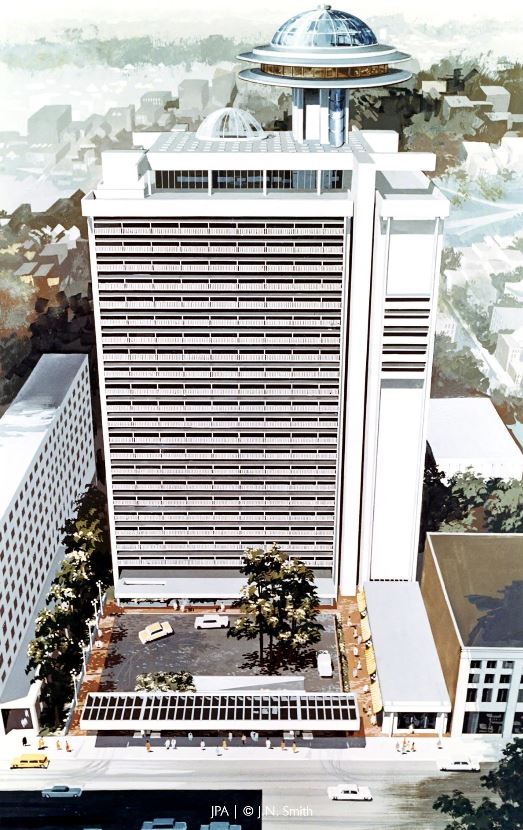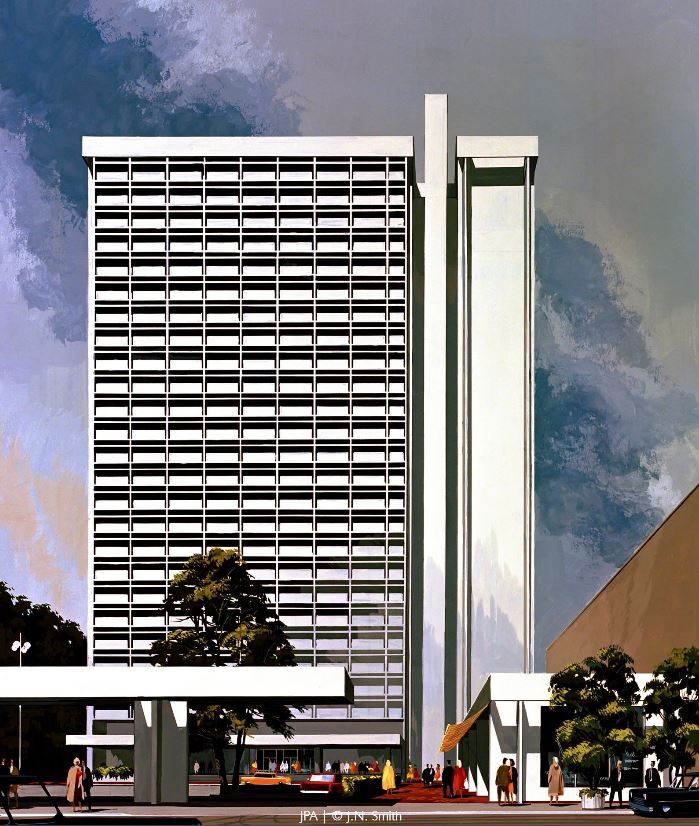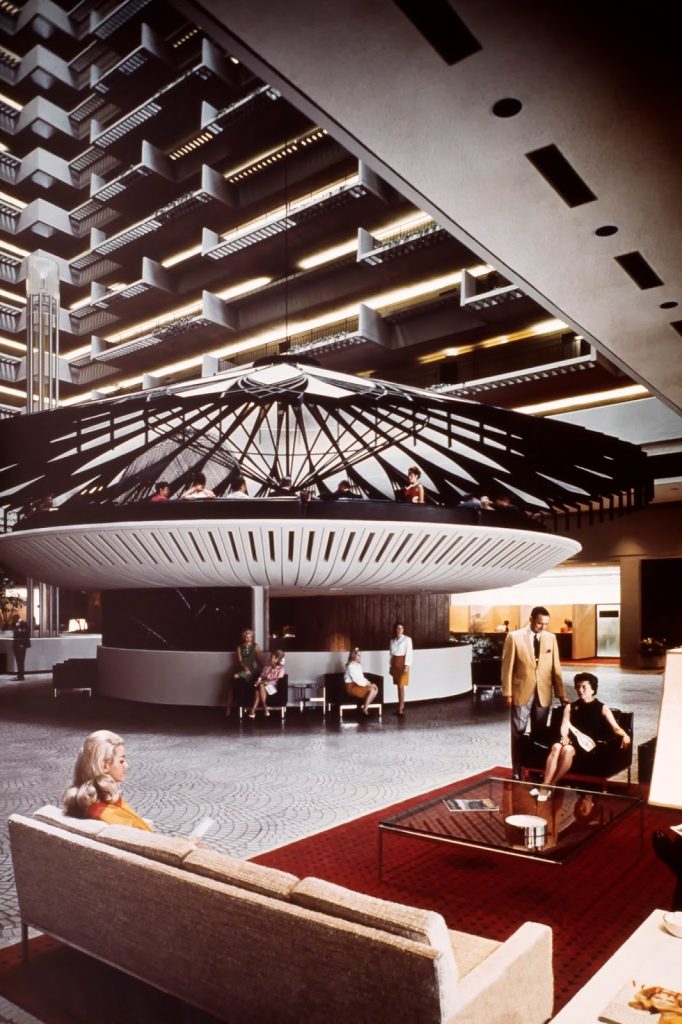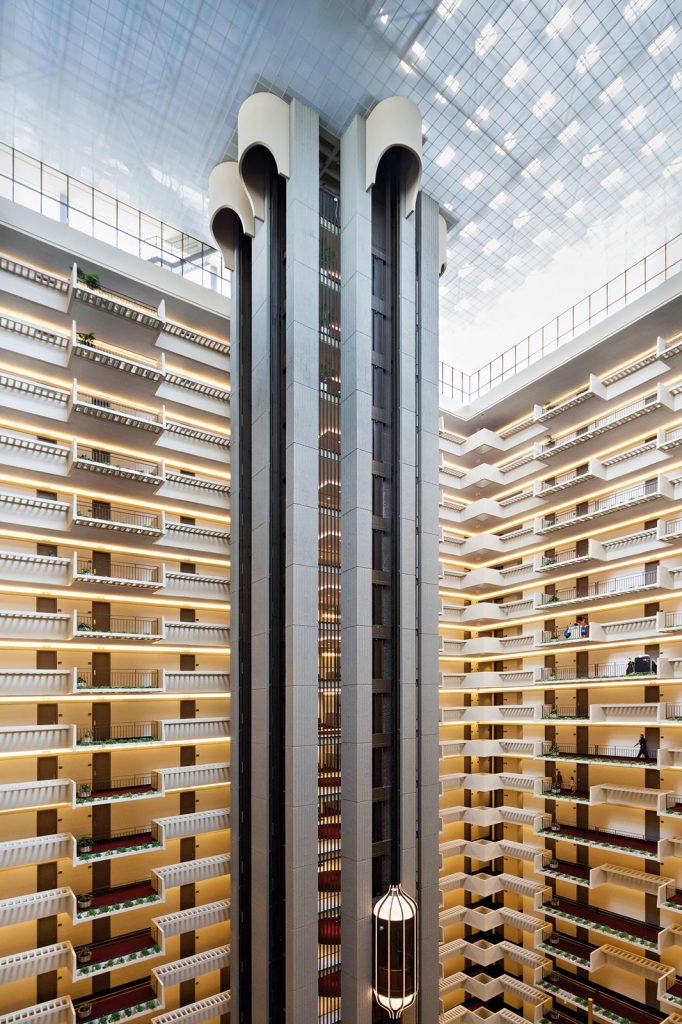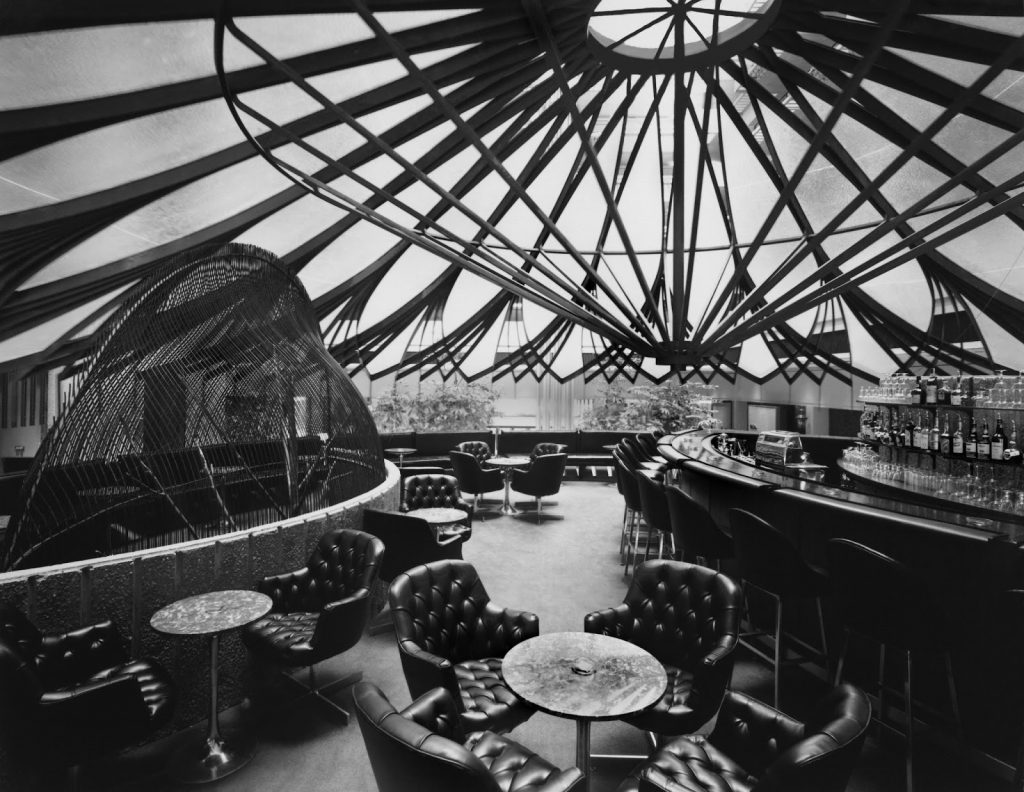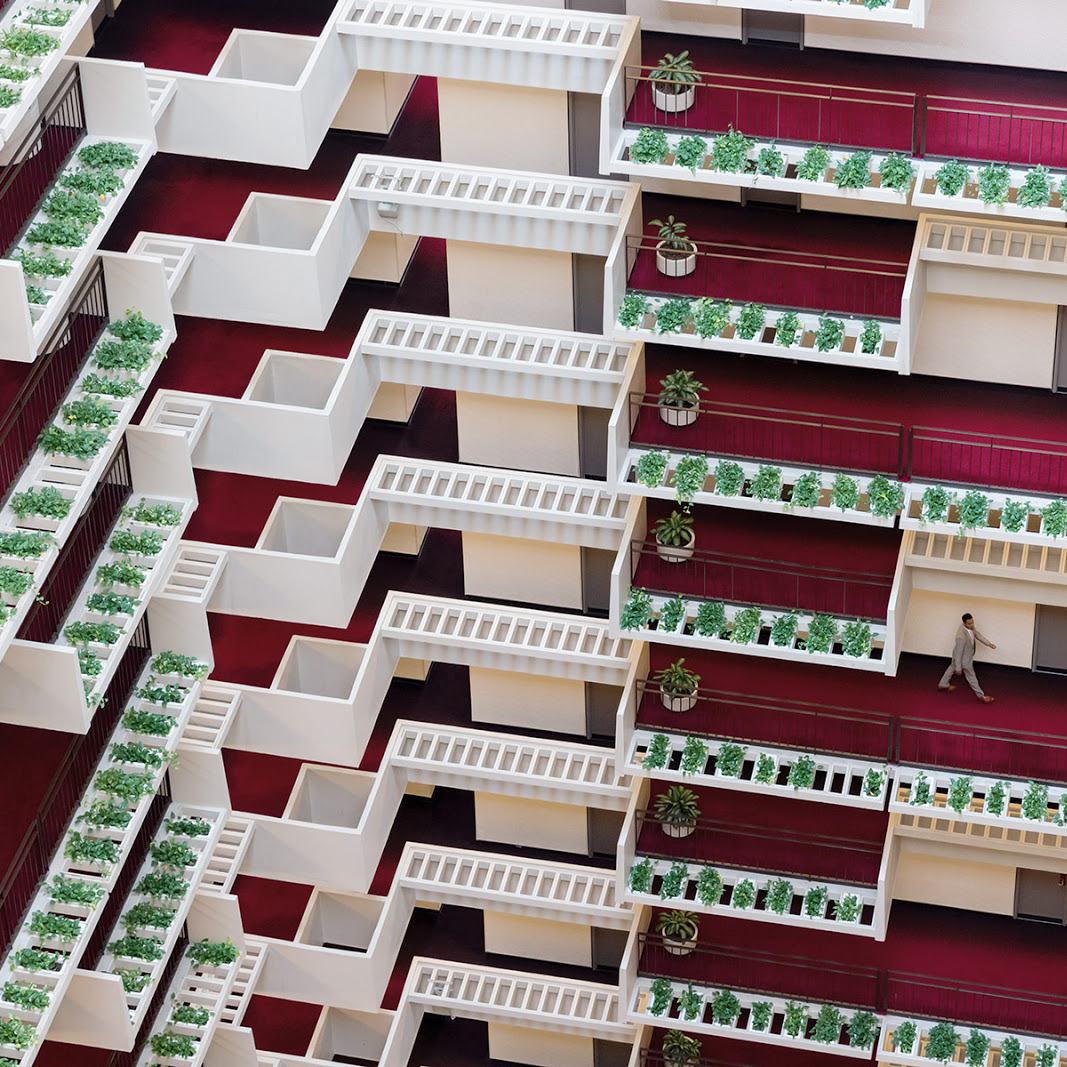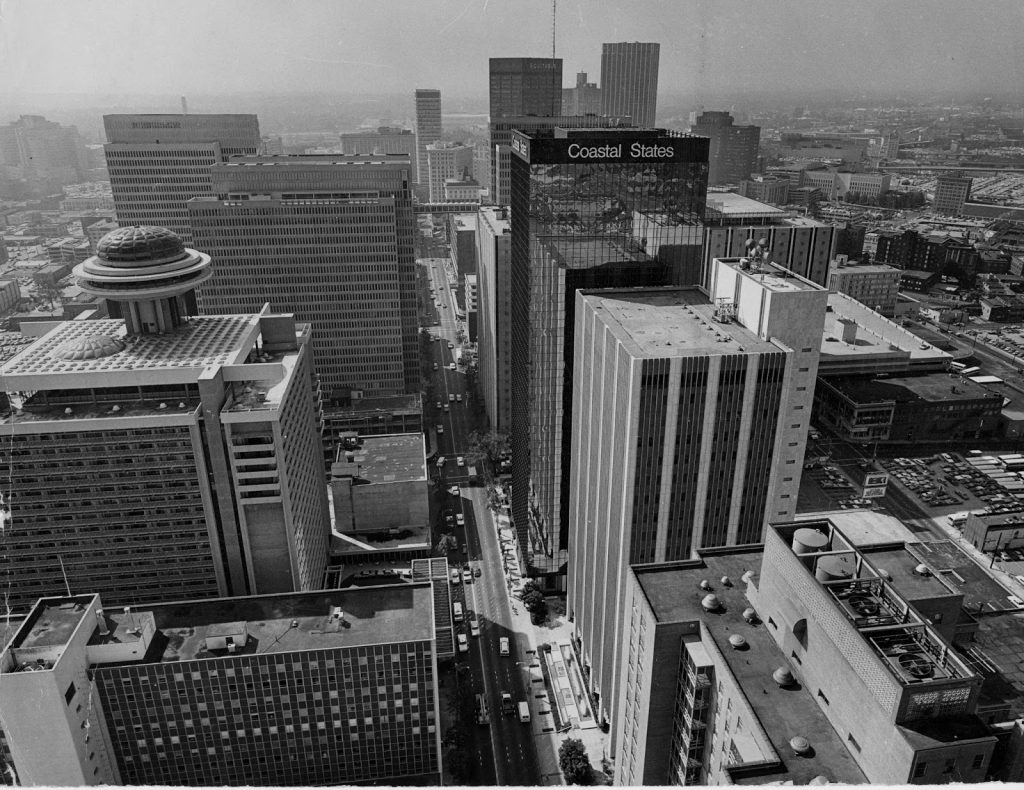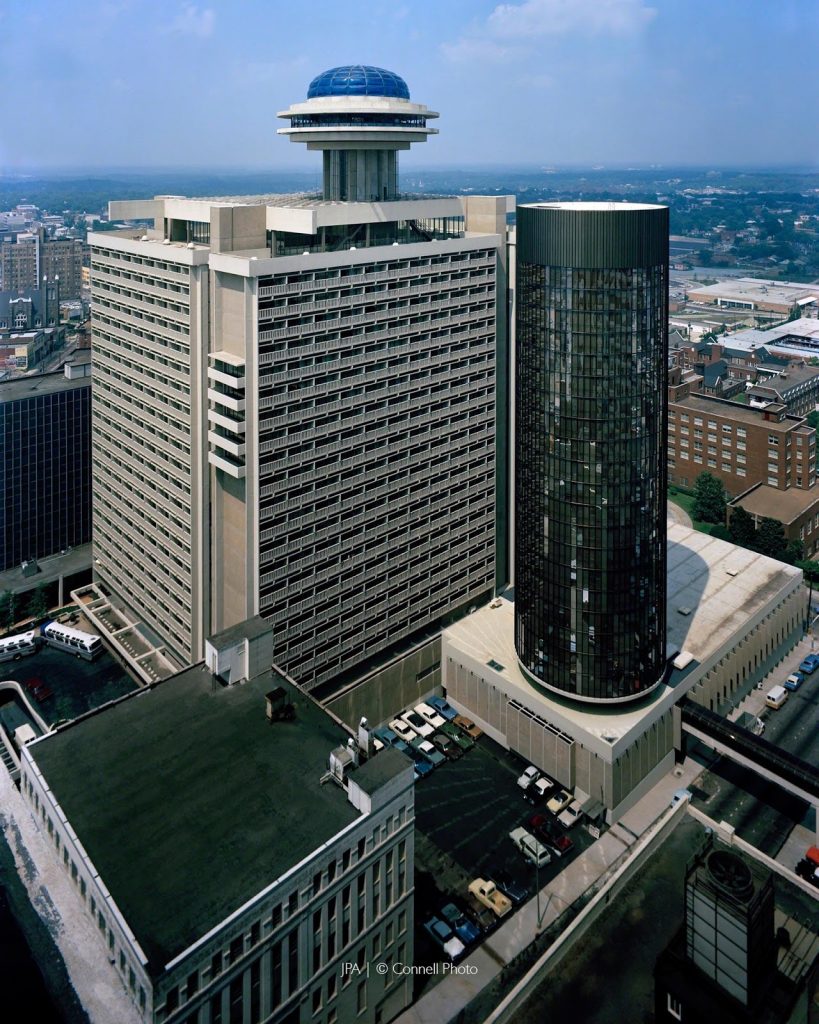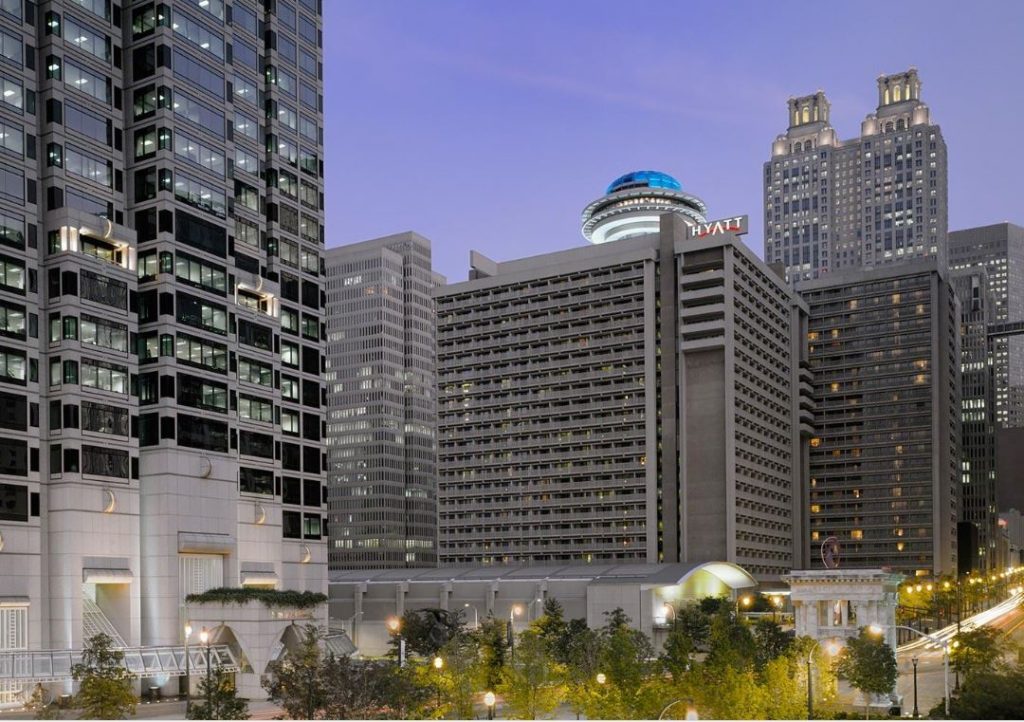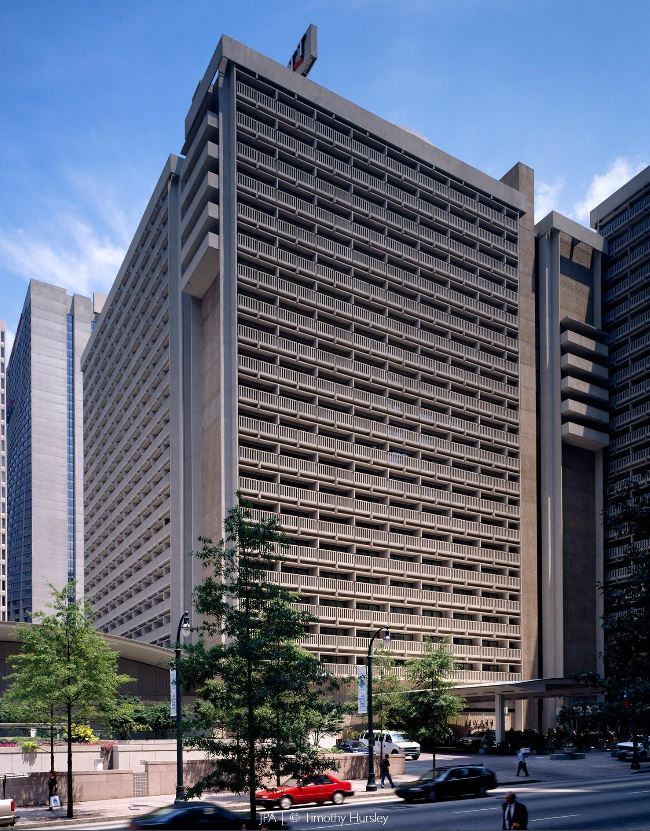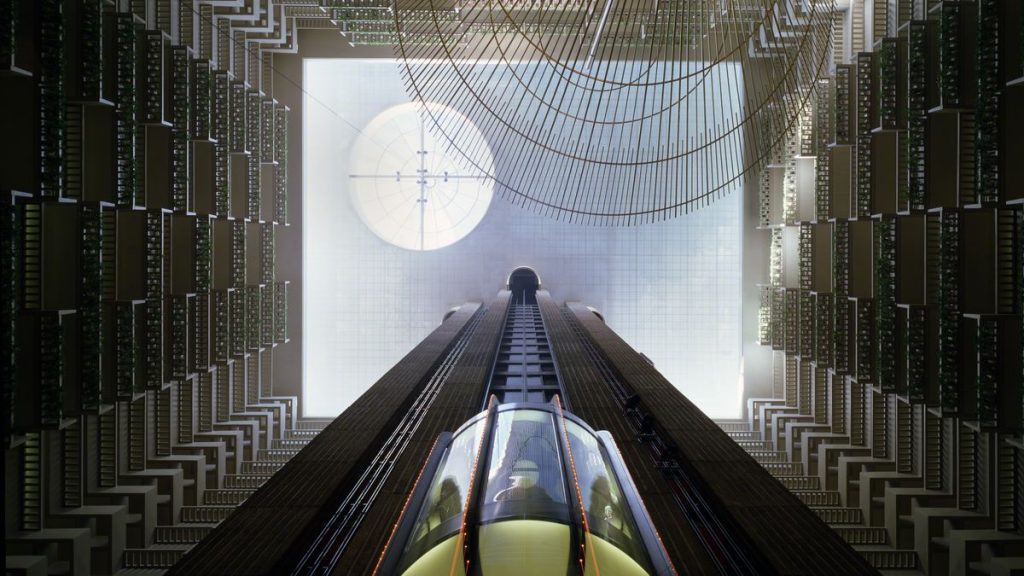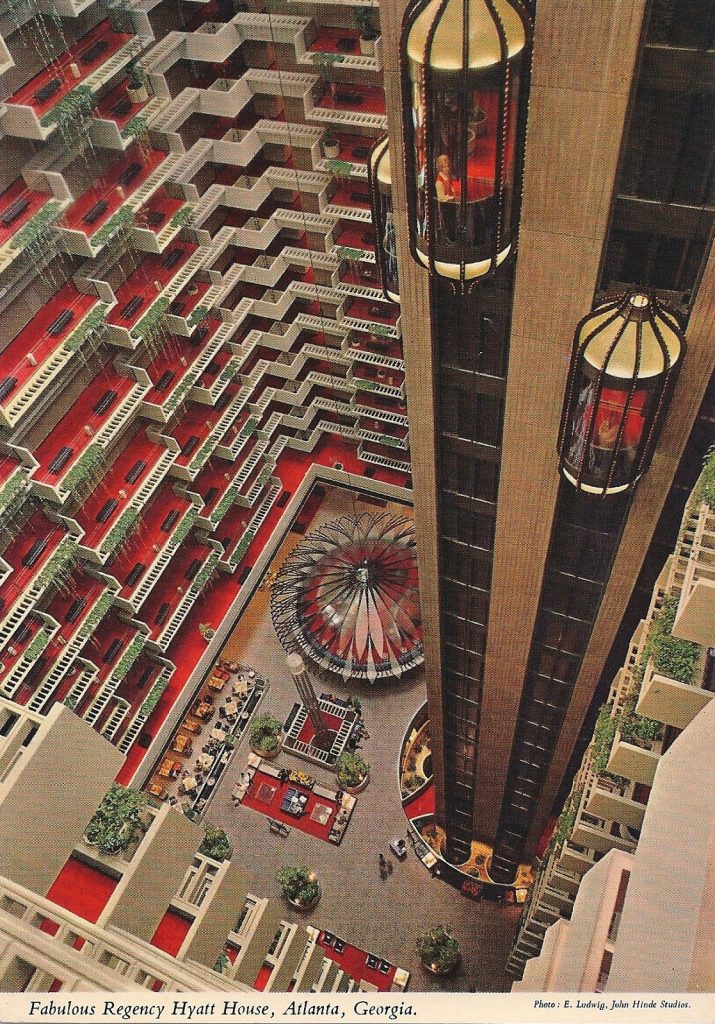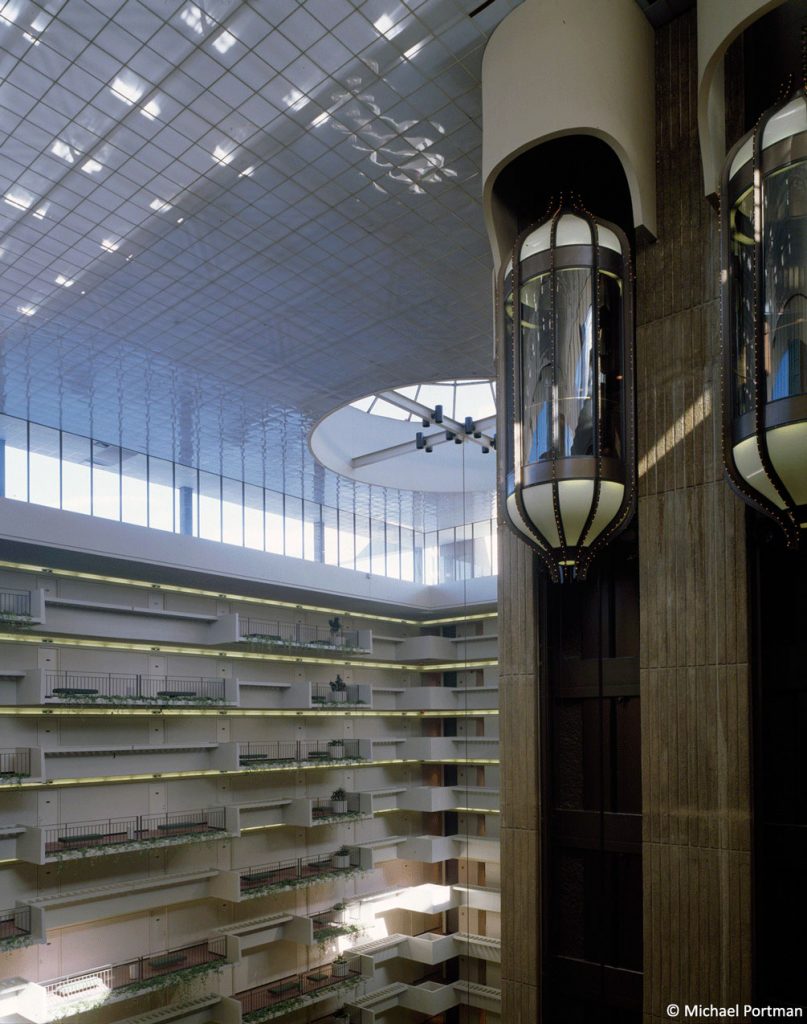In 1967, this hotel’s revolutionary architecture introduced the atrium concept to contemporary hotel design. The success of the original project, which consisted of 800 guest rooms, quickly prompted the addition of two guestroom towers.
En 1968, esta revolución en la arquitectura de los hoteles introdujo el concepto del atrio para el hotel contemporáneo. El éxito del proyecto original, el cual consistía en 800 habitaciones, rápidamente provocó una extensión con dos nuevas torres de habitaciones.
Today, with its natural light, sculpture, trees and water features, the interior resembles a large outdoor piazza bordered by a sidewalk cafe. It provides convenient access to convention and trade show facilities, shops and restaurants for guests and the local community.
Hoy en día, con su luz natural, sus esculturas, árboles y fuentes de agua, el interior recuerda a una gran plaza exterior rodeada por una cafetería perimetral. Además crea un acceso eficiente para el centro de convenciones así como tiendas y restaurantes para los huéspedes y la comunidad local.
John Portman Architects.

After we published two of the most successful projects of John Portman, The Atlantis Marquis Hotel and the Marriot Marquis Hotel of Times Square, where the office reinvented the Hotel typology introducing a large central void that visually and physically connect the public and private spaces, we wanted to bring the first project where this corporative office started to research about this typology.
Tras haber publicado dos de los proyectos más exitosos de John Portman, el Atlanta Marquis Hotel y el Marriot Marquis Hotel de Times Square, donde reinventa la tipología de hotel con un gran vacío central que conecta física y visualmente tanto los espacios públicos como privados, queríamos traer el primer proyecto de esta gran oficina corporativa, donde se comenzó a investigar sobre esta tipología.
Formally, the Hyatt Regency Atlanta is a large cubic concrete volume, visually opaque. A strange object with a flying saucer look appears in the roof and contrasts with the austere exterior look. The interior of the hotel is emptied creating a large central void that goes through all the floor plans and lights the interior. These empty space is crossed by the elevator core that works as a futurist object in a dramatic space. The core of the elevator ends up in the flying saucer where a restaurant with panoramic views to the city is located.
Formalmente, el Hyatt Regency Atlanta es un gran volumen cúbico de hormigón, visualmente opaco en el que destaca un objeto con apariencia de platillo volante en su cubierta. Sin embargo, su interior es vaciado creando un gran vacío central que atraviesa el edificio en todas sus planta e ilumina cenitalmente su interior. Dicho vacío es atravesado por el núcleo de ascensores que funciona como un objeto futurista en un lugar espacialmente dramático. El núcleo de ascensores desemboca en el platillo de la cubierta donde se localiza un restaurante con vistas panorámicas a la ciudad.
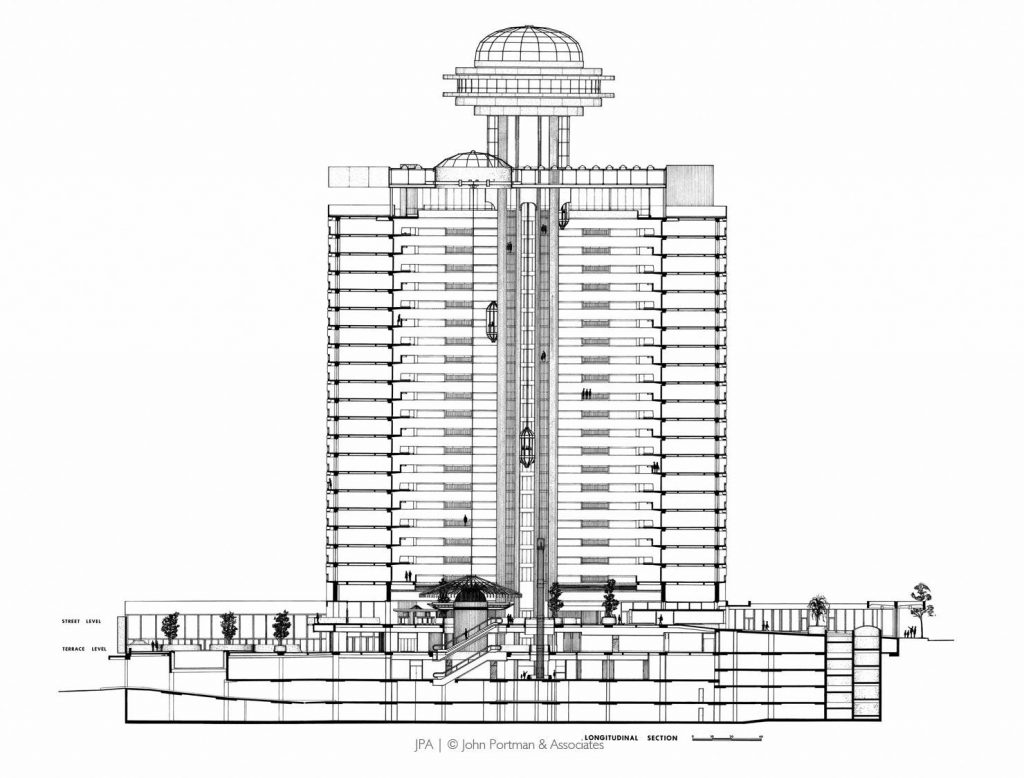
It is interesting to understand this building in its architectural context in relation with the own evolution of John Portman. The Hyatt Regency is a building with a strong brutalist character (strong geometries, the use of concrete, the creation of spaces with a dramatic effect, etc.) that was popular in the United States during these years; for instance, the Boston City Hall was designed in 1962. During the beginning of his professional career, Portman still lacked a own form to represent his own ideas and the influence of other styles was very present in his work. However, the interior started to have specific features that would develop onwards such as the interior facade grid with different planting of the futurist elevators. This folkloric-futurist aesthetic was deeply worked during the next until becoming extremely successful in several corporative circles and widely reject by the orthodox academicism.
Es interesante ver este edificio en su contexto arquitectónico en relación con la propia evolución de John Portman. El Hyatt Regency es un edificio con un marcado estilo brutalista (geometrías muy marcadas, uso del hormigón visto, creación de espacios con un efecto dramático, etc.) que predominaba en Estados Unidos durante aquellos años; por ejemplo cabe destacar que el ayuntamiento de Boston fue proyectado en 1962. En aquellos primeros años de su carrera, Portman aún carece de una forma propia de representar sus propias ideas y la influencia de otros estilos es más presente en su obra. No obstante, su interior comienza a tener ciertos rasgos propios que desarrollaría más adelante tales como la malla de la fachada interior donde cuelgan distintos tipos de planta o los ascensores futuristas. Esta estética folclórico-futurista la trabajaría en profundidad durante los siguientes años de su carrera hasta llegar a un punto donde su arquitectura se convertiría en extremadamente exitosa en ciertos círculos corporativos, pero ampliamente rechazada por varios campos academicistas más ortodoxos.
